Who Am I?
Who Am I?
When you are comfortably at home with your wallet and phone and computer and file cabinet, and all is right with the world (i.e., the electricity is on), you are who you are, and you have access to your considerable resources. Take those circumstances away – by earthquake, raging inferno, civil war, whatever – and you are just another featherless biped wandering through a hostile world.
Is there any way to mitigate the loss of personal identity and power that disaster can cause? Probably – with a little preparation. Many of your resources still exist – what has been disrupted is your access. You can preserve some of that by having information at your disposal. That means in your wallet, in your go-bag, and in the glove compartment of your car. What, and how?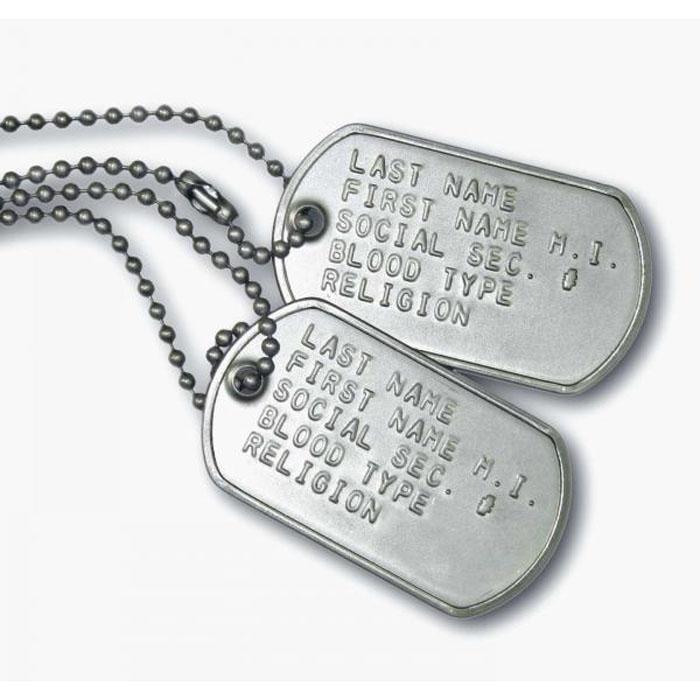
What follows is a set of considered suggestions. Cost-benefit, risk tradeoffs, and all such things are personal considerations. Reject the specific approaches if you wish, but consider the issues very seriously.
Here’s what I carry around – I’ll get to the where and how at the end of the list.
A piece of paper, with the following information:
Name, address phone(s) and email(s) for myself and my primary contacts (wife and children) and also for RVM.
Identification: Social Security, Driver’s License and passport numbers
[Yabbut #1: You might get your identity stolen. Yep – might come in pretty damned handy too. Your risk, your choice. Yabbut #2: why not carry copies? Good idea – when and where you can. Tough to fit them all in one of those little wallet pockets, though.]
Medical Info: Primary care physician name, address, phone. Conditions, ailments, diseases, handicaps (basically what an ER person should know before treating you for whatever got you there). Allergies. More if it’s important.
Medications: Pharmacy, address, phone; prescriptions – number, medication, dose, directions.
Insurance, etc.: Medicare #, Insurance carriers, policy #s, local agents if any. [Yabbut #3 – see Yabbuts #1 and #2. Same story – risk of delayed treatment or rescue vs. risk of account usurpation. Your choice.]
Financial and Legal: Adviser/business names & contact info. What about account numbers etc.? Accessing a credit card account might be really handy, but if you carry the info in writing, it’s probably best to separate the account #, the PIN, and the carrier so that the combination isn’t obvious.
How to do it? I typed it up (Arial font 10 pt, 9 would work) and formatted the page so a two-sided printout had all the information on a piece of paper that was 4.25” x 7.75”. Fold it in half one way and in thirds the other, and you have something the size of a business card. I found a teeny-tiny ziploc to contain it, and fit it into one end of my tri-fold wallet next to my Medicare card.
With less compression you can fit it comfortably into go-bag or car, along with photocopies if you wish. You can also include copies of birth/death/marriage certificates, and title information – most important things are legally recorded, so you don’t have to have the item, just an indication of how to find it.
The information counts, much more than the document – with careful formatting and copying you should be able to get everything you need onto a couple of sheets of paper – low weight, low bulk, opportunities for multiple copies.
RPG — An Updated Overview
RESIDENTS’ PREPAREDNESS GROUP (RPG)
At Rogue Valley Manor
This is the initial step toward developing a concise, complete, user-friendly guide to the role of residents in disaster preparedness and response at RVM. The linked information items will be edited and updated for use both on line and in printed form. Resident suggestions, questions, and especially participation are solicited.
WHAT: RPG is an independent organization of RVM residents established to support and assist RVM management and staff in responding to needs resulting from disasters or emergencies that may impact RVM residents.
WHY: RVM has nearly a thousand residents and a large complex of facilities spread over a substantial area. Staff on site may range from a few hundred to very few tens depending on day and time. It is unrealistic to expect staff to be able to meet all the needs arising from a high-damage, multiple casualty event such as the anticipated Cascadia Great Earthquake. See expanded explanation.
HOW: Independent Living residential units are grouped into neighborhoods (containing 1-10 units) among the cottages, and floors in the high-rises. Each neighborhood or floor has a coordinator responsible for maintaining contact with the residents in that unit. Neighborhoods and floors are in turn grouped into areas (11 total among the cottages — see pdf maps) or building sections in the high-rises (1 each in the Plaza and Terrace, 2 in the Manor). Area and Building coordinators provide communication links between the local coordinators and the RVM Incident Commander or administration, and facilitate preparations as well as responses. See pdf table of coordinators
WHO: The management structure of RPG is under development, having been interrupted by the COVID pandemic. Leadership is provided by co-chairs, a core group of advisers, and team leaders. See Organization
RPG has two primary goals and one secondary goal:
One primary goal of the RPG is to provide reliable communication between individual residents and the administration or other authorities. Accurate, up-to-date information about conditions or necessary actions is vital for residents in case of an emergency, and during or after a disaster it is critical that those charged with emergency response quickly learn about conditions on site and among the residents. See Communication Team status report.
The second primary goal is developing and supporting preparedness by informing and encouraging residents about emergency procedures and planning and preparation for disasters. This includes accumulation of critical supplies that may be unavailable during a protracted disaster. Existing write-ups include information on preparation basics, water, sanitation, light/electricity, personal medications, and personal documents — plus other information.
A secondary goal of the organization is to promote mutual assistance among residents in situations where needs cannot be met by external responders. The coordinators are not expected to fulfill the functions of emergency responders, but support ranging from advice to limited physical assistance can be of great help in an emergency.
What’s New — APRIL
NEWS & VIEWS
One Life’s End by Bob Buddemeier
-The Well-Planned Departure of Daphne Fautin
Garden Stories, by Carolyn Schenler. Grant Koch, and Joni Johnson
Moving the Garden, by Joni Johnson
-Judy and Damon Simpson saw it all
I am Not a Racist, They are! by Asifa Kanji
-A resident’s insight
Racism, Outrage and Solidarity, a transcript of an RVMlist discussion
-Resident responses to an initial posting by Russy and Anita Sumariwalla
Some Complementary Information, by Bob Buddemeier
-Readers and Reading Material
in In the Community
in Big, Borrowed, or Both
Hugs ‘n Cuddles
-A friendly visit to the lighter side, submitted by Tom Conger
3550: the Portland Mirabella quarterly magazine (most recent issue)
Mirabella Monthly, Newsletter of the Seattle Mirabella (most recent issue)
ARTS & INFO
Hawai’ian Native Art, by Tom Conger
St. Patrick’s Day Manor Door Decor, by Connie Kent
-Photos by Reina Lopez
Little Doors by Connie Kent
-Photos by Reina Lopez
RVM Apr-Jun Event & Entertainment Schedule
in Books & Authors
April Book Display, RVM Library by Anne Newins
Waters of Eternal Youth — (Book Review), by Bonnie Tollefson
PREPARE
Organization (update)– by Bob Buddemeier
RPG Radio Network, (update) by Bob Buddemeier, Dan Curtis, and Scott Wetenkamp
Big, Borrowed, or Both
Sometimes we come across interesting things that have been produced elsewhere or don’t quite fit in our format. Why should that stop us?
Once again, Russy Sumariwalla provides us with a reflective essay on general topics — the global environment and population — viewed from the specific context of his unique background — India and Zoroastrianism, Click here to taste the junction of philosophy, religion and sustainable development.
Inaugural Poem: The Hill We Climb, by Amanda Gorman
3550: The online quarterly magazine of the Portland Mirabella (also a PRS CCRC facility), it is an open internet publication.
The Mirabella Monthly newsletter of the Seattle Mirabella is available in PDF format by (free) subscription: email jaredcurtis@icloud.com To download the March issue, Click here
The UN@75: Why Should We Celebrate? On the occasion of the 75th anniversary of the United Nations, Russy Sumariwalla writes a reflective essay on its significance. Previously distributed via RVMlist. Click here to download
More Six-Word Novels
Another batch of 6-word Covid novels submitted by RVM residents. Our thanks again to Eleanor Lippman for kicking off this project.
Too much time on our hands. (Mary Bjorkholm)
Sun’s shining. Sky’s blue. All’s well. (Willi Zilkey)
Joy to all residents living alone. (Carolyn Shirk)
Enough! Six words are too much! (Doyne Mraz)
No longer working, grateful for retirement. (Janet and Jere Scott)
Is we is, is we isn’t? ( Gail Schaffer)
Every moment together is a gift. ( Kay Presnell)
My dog brings me pure joy. (Dottie Prideaux)
Darn mask fogs up my glasses! (Jim Quan)
Ready to go? Got your mask? (Victoria Gorrell)
We are thankful to be thankful. (Carol Solomon)
2020 frenzy, morbid Covid, monochrome syndrome. (Janet and Jere Scott)
Wearing a mask is such a task! (William Silfvast)
Vaccination, maxvacation going out at last! (Patricia Robb)
Dreaming Praying for Covid-19 to end! (Anita Sumariwalla)
I’m not throwing away my shot! ( Ron Silverman)
To SIP has a new meaning. ( Dolores Fisette)
Remind me – what is your name? (Alex Maksymowicz)
I miss seeing so many friends. (William Silfvast)
I am grateful to be here. (William Silfvast)
To mask or not to mask . (Barb Field)
All is quiet except for RVMlist. (Janet Ross)
Our fudge tastes so very good. (Carol Solomon)
Can hardly wait to get some. (Sue Silfvast)
Music provides for me much pleasure. (William Silfvast)
So thankful to be an American! (Helen Russ)
Positive thinking yields a happier life. (Robert Carter)
Where do the brown bags go? (Sol Blechman)
RVM = shelter from the storm. (Pratibha Eastwood)
Apart but together, still a community. (Victoria Gorrell)
What will I not do today? (Ken Kelley)
EAT…WALK…NAP…ZOOM…EAT…T.V. (Bill & Dorothy Powell)
Inspection, Detection; Infection, Dejection; Injection; Protection. (Dennis Murphy)
In cocoon with love and meows. (Karen Frair)
Watching birds at feeder every day. (jbbardin)
Makeup? hmmm…give up, mask up! (Janet and Jere Scott)
Mired down, Tired, Wired, Fired up. (Edwin Bennett)
Multiple months inert. Possible to revert? (Don Vermeer)
The First Step
A journey of a thousand miles starts with a single step.
A single step is what the nerds call a necessary but not sufficient condition for a thousand-mile journey. A first step may not lead to a thousand miles, but you definitely won’t go a thousand miles without taking one. It’s great to applaud our RVM volunteers as they cross the finish line, but this article is meant to show encouragement and appreciation for those willing to take that first step — new volunteers, or volunteers in a new position.
 Janet McGary, Chair of the Tutorial Committee
Janet McGary, Chair of the Tutorial Committee
Jan has taken a big first step into the position long held by Bob Saunders, where she will be working with the tutorial committee to bring us enjoyable and educational presentation series on Friday mornings. She brings to the job a master’s degree in Art History, as well as teaching and travel experience. She looks forward to ideas and suggestions from interested residents.
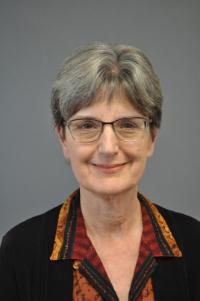 Vicky Gorrell, secretary of the Dining Services Advisory Committee
Vicky Gorrell, secretary of the Dining Services Advisory Committee
Vicki stepped into a low-profile but critically important position. Advisory committee secretaries create the posted minutes that not only keep committee operations on track, but also provide residents with an opportunity to stay informed about issues within the committee’s area of responsibility. Vicki also provides, on her own initiative, weekly reformatted (8.5×11″. larger print) versions of the menus
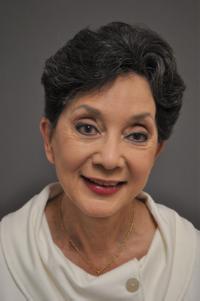 Patty Robb, member, Birthday Lunch Committee
Patty Robb, member, Birthday Lunch Committee
Patty steps into the position held by Carolyn Schenler for 15 years(!). Patty and her husband arrived at the beginning of the lockdown, so has never seen RVM in action. This is her very first first step into the RVM volunteer world, and she’s looking forward to learning what she and the committee will be doing. We think she deserves extra points for taking her first step in the dark.
 Annabel Ross, Resident Business Office Monitor
Annabel Ross, Resident Business Office Monitor
Do you photocopy, cut, staple, browse? If so, Annabel is the one who keeps you going by stocking and organizing the Resident Business Office. Although this is a relatively new job for her, it is far from her first first step — She is an Annex Sale functionary, a Neighborhood Coordinator for RPG, and someone who can be counted on to show up when a call goes out for volunteers. Her inventory of first steps puts her in the running for the prestigious Millipede Award.
 Michael Rugg, Resident Gardens Chair
Michael Rugg, Resident Gardens Chair
Mike Rugg has taken over the garden plots management from Damon and Judy Simpson. He and his wife are both gardeners, and he brings his experience and enthusiasm to his new volunteer job. Mike and the gardens were featured in an article in the April issue of hillTOPICS (p 10).
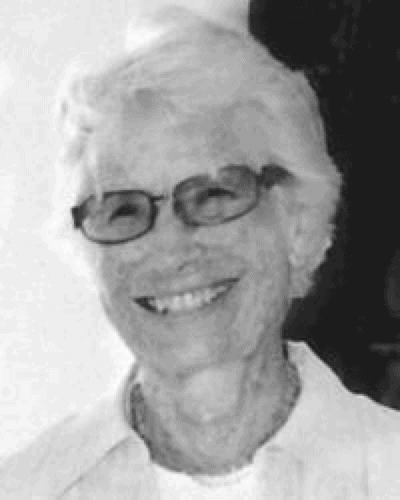 Jordan Mo, Historian
Jordan Mo, Historian
Jordan stepped into the Resident Council Historian job to replace Daphne Fautin. Her self-introduction was published earlier in The Complement.

Worker Bees keep things buzzing with sweet results
The Wellness Advisory Committee (WAC), currently co-chaired by Saul Krimsly and Dolores Fisette, has been the source of many new volunteer projects, staffed by many new volunteers (the worker bees). Jane and Steve Harris, the former WAC co-chairs, have been instrumental in many of those. Jane and Steve took their first first steps long ago, but every time you think your journey has ended, there is the opportunity for a new first step. Theirs came when they re-enlisted at the behest of Dan Wagner after RVM went into lockdown and there was great need on campus for resident support. I can’t do any better than quote Jane’s description.
“* In response to the isolation of the pandemic lockdown, we organized and I continue to manage the 2020 Card Writing project, where 28 volunteers have been paired with residents. They communicate with their recipients through written cards, emails, phone calls, and walks.
* For the 2020 Holidays, at the suggestion of new resident Asifa Kanji, Saul and Dolores organized a Secret Santa activity where participants received the name of a resident and secretly provided him/her with a gift on Christmas Eve. The Secret Santa received a gift from his/her own Secret Santa. This livened up our Holiday Season.
* A team of four of us – Barbara Moore, Dolores Fisette, Saul Krimsly, and I – created and managed the Valentine’s Day card making project for the children of Willow Wind Community School in Ashland in response to the beautiful Holiday cards they sent to us in December. Over 60 residents created beautiful hand-made valentines, over 180 in all, that were delivered to the school. This has created an intergenerational relationship with children outside of our RVM community.
* Currently, a WAC member, Judy Blue, is organizing a Pen Pal Project with Willow Wind to be started in the Fall.”
Staff member Sarah Karnatz has joined the WAC and the worker bees and played a major role in developing and carrying out the programs — a great example of resident-staff cooperation.
So we had 28 card writers, 60 valentine makers, and significant numbers of Secret Santas and pen-pals stepping up. It would be great to acknowledge the worker bees individually, but we have to do it on a whole-hive basis. With all of those legs they should be able to keep up a whole lot of stepping, as long as they heed the COVID warning: keep six feet apart.
Still More Words at Play
Priceless Treasures Excavated by the Consummate Word-miner,
Tom Conger
“When I use a word,” Humpty Dumpty said, in rather a scornful tone, “it means just what I choose it to mean—neither more nor less.”
“The question is,” said Alice, “whether you can make words mean so many different things. Through the Looking Glass – Lewis Carroll
For this chapter, we are indebted to Why Do We Say That? compiled by Graham Donaldson and Sue Setterfield, Dorset Press 1989.
Put a sock in it! – “In these days of compact discs, videos and digital recordings, it is astonishing to think that only fifty years ago [1939] people used wind-up gramophones with the sound emerging from a large horn. A volume control was a thing of the future. So when Aunt Agatha complained of that dreadful Charleston noise there was only one thing to do—put a sock in it—literally. One or more woolen socks were pushed into the horn of the gramophone to muffle the sound. Today it means, quite simply: ‘shut up’.“
load of old codswallop – “When somebody says something which is nonsense, far-fetched, or simply untrue, they are often accused of speaking ‘a load of codswallop.’ We have a certain American gent called Hiram Codd to thank for this colourful expression. In 1875 he patented a special bottle of mineral water which became very popular—except among hardened beer drinkers. The word ‘wallop’ was already well in use to describe alcoholic drinks and so, sneeringly, Hiram’s concoction—and other weak drinks—became known in bars as ‘Codd’s Wallop.’ Gradually, anything inferior or false became known by the single word ‘codswallop’.”
toady – “This saying is used to criticise somebody who, to further his own ends, says or does anything to please his superior. It comes from the days of traveling medicine men in the American ‘Wild West.’ They used to sell useless potions to the public. Taking advantage of the popular but false belief that toads were extremely poisonous, the ‘quack’ doctor would get an accomplice to swallow, or pretend to swallow, a toad. He would then immediately drink one of the doctor’s potions and, much to the amazement of the crowd, walk away fit and well.”
hair of the dog – “After a party, it is not unusual for some of the guests to wake up the next morning with a hangover. The cure is said to be another drink, or ‘The hair of the dog.’ This is based on the superstition that people who are ill after being bitten by a dog can only be cured by swallowing a piece of burnt hair from the same animal. In truth, the ‘cure’ seldom works.”
rigamarole – First you do this, then you do that, then you do another thing, then…oh, what a rigamarole!’ That’s just what we call a long, involved, complicated way of doing things. The 700-year old expression began life as the Ragman Roll, given to King Edward,I by Scottish noblemen. Each signed a deed pledging loyalty to the king and affixed his seal. The deeds were then joined together to form a document 40 feet long! The Ragman Roll is kept at the Public Records Office, London.”
deadline – A deadline is the final time by which a job must be finished. Journalists use the word a lot [see: The Complement…]. If they don’t meet their deadline their work is useless [not going there…]—or dead—because it will have missed the edition. The phrase comes from the American Civil War in the 1860s. A line was marked all around the wire fence of the Andersonville prisoner-of-war camp and any prisoner seen crossing the line was, without warning, shot dead.”
“A word is not a crystal, transparent and unchanged, it is the skin of a living thought and may vary greatly in color and content according to the circumstances and the time in which it is used.”
Justice Oliver Wendell Holmes
Apeirogon
a book review by Connie Kent
A horrible book. Horrible and horrifying. It’s shocking, distressing, confusing, sad. And it’s true. 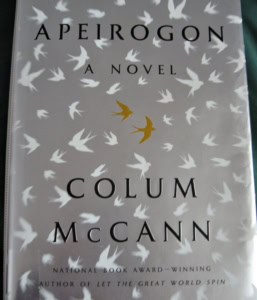
![]()
This disturbing tale is presented as a novel set in contemporary times. An Israeli man and a Palestinian man each lost a daughter to violence. The Palestinian man’s ten-year-old daughter was hit in the back of the head with a rubber bullet (a metal bullet with a rubber coating) as she stood outside a candy store with her friends during a morning break from school. The shooter was an eighteen year old Israeli soldier. Ten years earlier, the thirteen year old daughter of the Israeli was one of several victims of a Palestinian suicide bomber. Eventually, the men became friends participating in an organization that presents lectures worldwide, educating the rest of us and urging peace.
It’s a long book. It has 1001 chapters. Some are as short as one sentence, others cover several pages. Chapter numbers reach a peak in the middle and then reverse back to chapter one in the second half.
‘Apeirogon’ means “a shape with a countably infinite number of sides.” How can that be? It comes up several times in the book. It may refer to the infinite number of sides of the Israeli-Palestinian conflict, with people of many different nations having a share; it may refer to the fact that, if you follow the line around the figure, you always come back to the starting point. That was explained somewhere in the book. It’s an unhappy story, a horrifying book – not a happy read. But it’s an important one.
McCann, Colum. Apeirogon. Random House, 2020.

